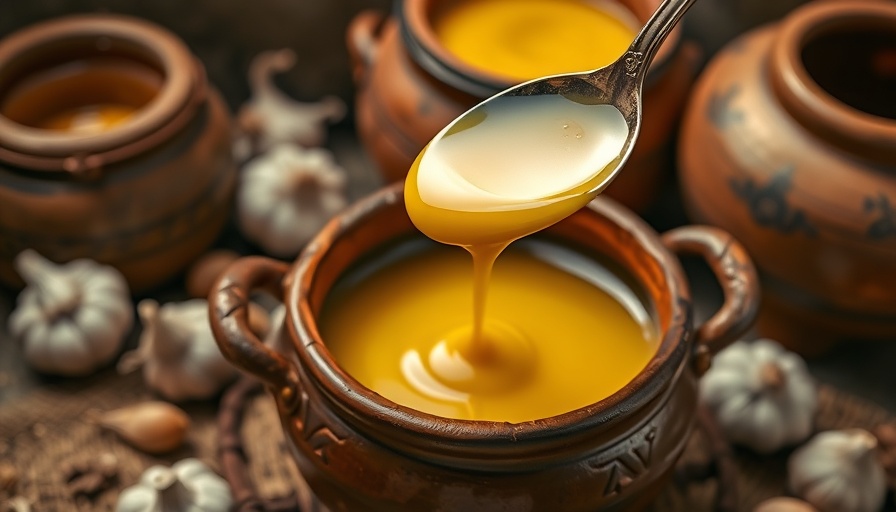
Choosing the Best Ghee: A Nutritional Perspective
In Indian households, ghee isn’t just a cooking ingredient—it embodies a rich tapestry of culture, tradition, and wellness. As a staple in many diets, especially those focused on health and nutrition, ghee brings with it numerous benefits considering its composition of medium-chain fatty acids. This article dives deep into the vibrant world of ghee, specifically comparing two highly revered brands: Vedic and Anveshan. Both claim to offer A2 Desi Cow Ghee made using traditional methods, but how do they stack up against each other?
Vedic Ghee: The Essence of Tradition
Originating from Kesariya Farm, Vedic Ghee is crafted using milk from grass-fed Gir cows in Gujarat. The Bilona method traditionally used for preparation involves churning cultured curd to make butter, which is then simmered to produce ghee. This labor-intensive process is not just about creating a product; it's about preserving age-old traditions of purity and taste.
Pros and Cons of Vedic Ghee
Vedic Ghee is celebrated for its rich flavor and thick texture, appealing to both culinary enthusiasts and health-conscious eaters. However, at a higher price point than its competitors, some users may find it a bit heavy for their taste, leading to concerns about value.
- Reasons to Buy: Offers a rich traditional flavor and has lab-tested purity.
- Reasons to Avoid: Higher price and occasional authenticity concerns.
Anveshan Ghee: A New Age Favorite
On the other hand, Anveshan Ghee presents itself as an affordable alternative, crafted from Hallikar cow milk in Karnataka. It embraces cruelty-free practices and emphasizes small-batch production, which appeals to consumers looking for transparency in sourcing.
Pros and Cons of Anveshan Ghee
This brand has gained a following due to its grainy texture that many find delightful. With an emphasis on lab testing—over 70 tests reported—Anveshan offers peace of mind for health-conscious consumers. However, feedback regarding aroma can be mixed, so it may not suit everyone’s palate.
- Reasons to Buy: Affordable pricing and transparent production methods.
- Reasons to Avoid: Mixed responses to aroma and flavor.
The Nutritional Edge: Why Ghee?
Ghee’s appeal extends beyond its culinary uses. The presence of medium-chain fatty acids allows for easier digestion and immediate energy release compared to other fats. Furthermore, its richness in vitamins A, D, and K2 supports various bodily functions, making it an excellent addition to meals.
Making Informed Decisions: Which Ghee to Choose?
Choosing between Vedic and Anveshan Ghee depends significantly on your dietary needs and ethical considerations. For those prioritizing authenticity and traditional Indian culinary practices, Vedic Ghee might be the ideal choice. In contrast, if you’re looking for affordability and ethical production, Anveshan could be your go-to.
Closing Thoughts: Empowering Your Eating Habits
With the ever-growing conversation around sustainable eating and nutrition, understanding the value of products like ghee is crucial. More than just a cooking fat, ghee embodies a healthy lifestyle choice steeped in culture and tradition.
By exploring both options thoroughly, you not only enhance your nutritional intake but also support producers who respect traditional methods. So, the next time you're in the kitchen, remember that the best ghee is not just about taste—it's about making informed, sustainable decisions for you and your loved ones.
 Add Row
Add Row  Add
Add 




Write A Comment